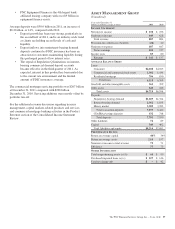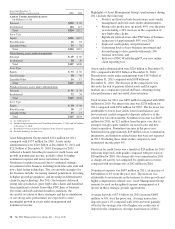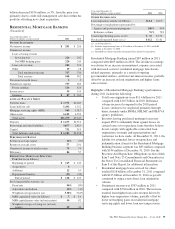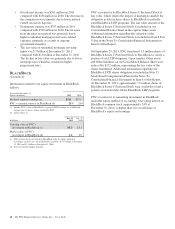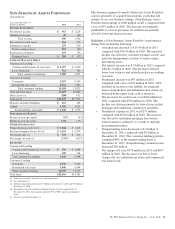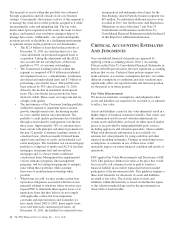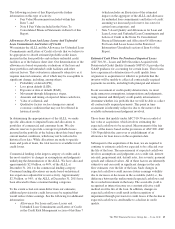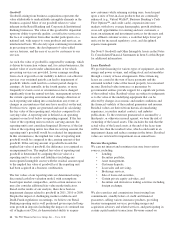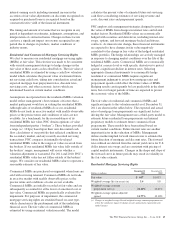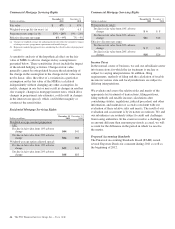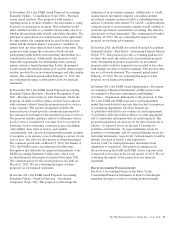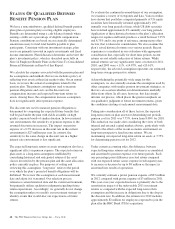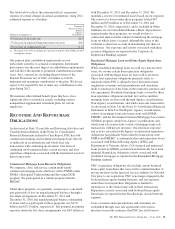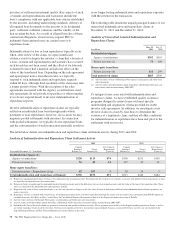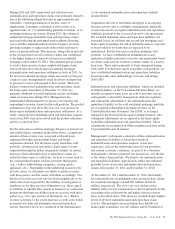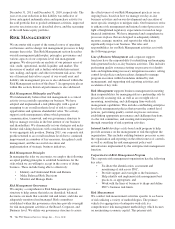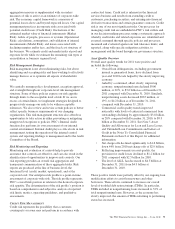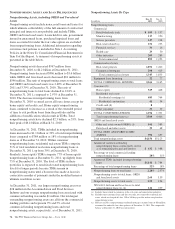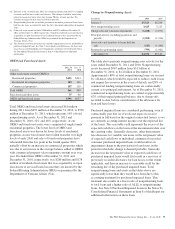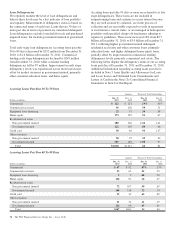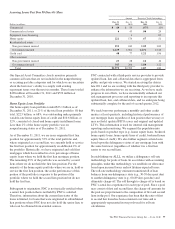PNC Bank 2011 Annual Report Download - page 76
Download and view the complete annual report
Please find page 76 of the 2011 PNC Bank annual report below. You can navigate through the pages in the report by either clicking on the pages listed below, or by using the keyword search tool below to find specific information within the annual report.In November 2011, the FASB issued Proposed Accounting
Standards Update – Consolidation (Topic 810) – Principal
versus Agent Analysis. This proposal would require a
reporting entity to evaluate whether a decision maker is using
its power as a principal or an agent. This evaluation would
affect whether an entity is a variable interest entity and, if so,
whether the reporting entity should consolidate the entity. The
principal or agent decision would be based on the rights held
by other parties, the compensation received by the decision
maker and the decision maker’s exposure to variability of
returns from any other interests that it holds in the entity. This
proposal would change the evaluation of kick-out and
participating rights held by noncontrolling shareholders in a
consolidation analysis. Additionally, the proposal would
impact the requirements for determining when a general
partner controls a limited partnership. Lastly, the proposal
would rescind the indefinite deferral of variable interest entity
analysis provided for an investment manager and other similar
entities. The comment period ended February 15, 2012. We
are evaluating the impact of this proposal on our financial
statements.
In November 2011, the FASB issued Proposed Accounting
Standards Update (Revised) – Revenue Recognition (Topic
605) – Revenue from Contracts with Customers. Under the
proposal, an entity would recognize revenue from contracts
with customers when it transfers promised goods or services
to the customer. The revenue recognized would be the
transaction price based upon the consideration promised by
the customer in exchange for the transferred goods or services.
The proposal includes guidance on how to determine when a
good or service is transferred over time, how to account for
warranties, how to determine a transaction price (including
collectability, time value of money, and variable
consideration), and a practical expedient that permits an entity
to recognize as an expense costs of obtaining a contract (if one
year or less). The effective date has not yet been determined.
The comment period ends on March 13, 2012. On January 4,
2012, the FASB issued a second proposal on Revenue
Recognition that illustrates the proposed amendments to the
FASB Accounting Standards Codification,which were
excluded from the first proposal issued in November 2011.
The comment period for the second proposal also ends on
March 13, 2012. We are evaluating the impact of these
proposals on our financial statements.
In October 2011, the FASB issued Proposed Accounting
Standards Update – Financial Services – Investment
Companies (Topic 946). This proposal would change the
definition of an investment company. Additionally, it would
require that an investment company consolidate another
investment company in which it holds a controlling financial
interest. Consistent with current U.S. GAAP, a noninvestment
company parent of an investment company would continue to
retain the specialized consolidation accounting. The effective
date has not yet been determined. The comment period ended
February 15, 2012. We are evaluating the impact of this
proposal on our financial statements.
In October 2011, the FASB also issued Proposed Accounting
Standards Update – Real Estate – Investment Property Entities
(Topic 973). This proposal provides accounting guidance for
an entity that meets the criteria to be an investment property
entity. Investment properties acquired by an investment
property entity would be required to be recorded at fair value
with changes in value recorded in earnings. The effective date
has not yet been determined. The comment period ended
February 15, 2012. We are evaluating the impact of this
proposal on our financial statements.
In January 2011, the FASB issued Supplementary Document –
Accounting for Financial Instruments and Revisions to the
Accounting for Derivative Instruments and Hedging
Activities – Impairment. Subsequent to this proposal, in June
2011, the FASB and IASB proposed a credit impairment
model that would divide loans into three buckets for purposes
of calculating impairment. The three buckets are:
(1) portfolios with little to no evidence of credit impairment,
(2) portfolios with observable evidence of credit impairment,
and (3) individual instruments that are credit impaired. The
proposed impairment calculations for the three buckets are as
follows: (1) expected losses for the next 12 months for
portfolios of instruments, (2) expected lifetime losses for
portfolios of instruments, and (3) expected lifetime losses for
individual instruments, respectively. All instruments would be
initially classified in bucket 1 and transition to
buckets 2 and 3 if credit performance deteriorates from
origination or acquisition. This proposal continues to be
discussed among the FASB and IASB. A new exposure draft
is expected to be issued in the second quarter of 2012. We are
evaluating the impact of this proposal on our financial
statements.
Recent Accounting Pronouncements
See Note 1 Accounting Policies in the Notes To the
Consolidated Financial Statements in Item 8 of this Report
regarding the impact of new accounting pronouncements.
The PNC Financial Services Group, Inc. – Form 10-K 67


